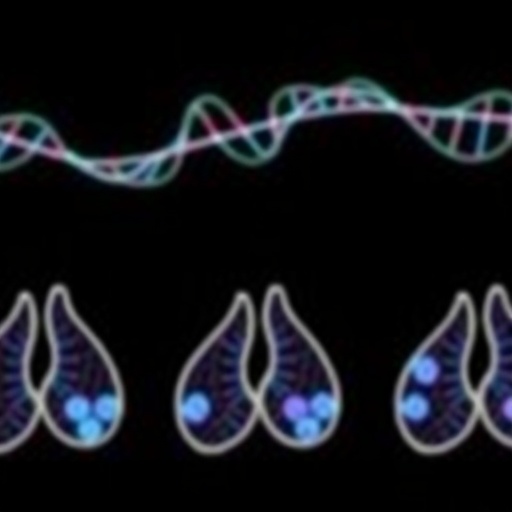The world’s first genetic sequencing of precancerous lung lesions could pave the way for very early detection and new treatments, reports a new study led by UCL researchers.
Before lung cancer develops, precancerous lesions are found in the airway, but only half of these will actually become lung cancer, while others will disappear or remain benign without becoming harmful. Under the microscope, the lesions look the same, making it difficult to know which lesions to treat.
In this study, published in Nature Medicine, researchers have for the first time, discovered the differences between the lesions that will become invasive and those that are harmless, and they can accurately predict which lesions will become cancerous.
“Our study helps to understand the earliest stages of lung cancer development, by figuring out what’s going on inside these cells even before they become cancerous,” said the study’s lead author, Professor Sam Janes (UCL Division of Medicine and University College London Hospitals, UCLH).
“Using this information, we may be able to develop screening tests, and new treatments that could stop cancer in its tracks.”
The researchers were studying biopsies of preinvasive lung cancer lesions of patients who were seen at UCLH. They conducted tests including gene expression profiling, methylation profiling, and whole-genome DNA sequencing on 129 biopsy samples from 85 patients.
On average, the patients were followed up for over five years post-biopsy, to see which patients developed lung squamous cell carcinoma, one of the two most common subtypes of lung cancer.
The research team identified differences in genomic features such as mutations, gene expression and chromosomal instability, finding enough differences that they could predict with near-perfect accuracy which lesions would develop into cancer by checking the lesion’s molecular profile.
By identifying which precancerous lesions are harmful, the researchers say clinicians could decide whether or not to offer a patient surgery at a much earlier stage of the disease than is currently possible, while saving others with benign lesions from unnecessary surgeries.
Precancerous lesions are detected by bronchoscopy, a minimally invasive test that is often done on people with chronic cough or a history of lung cancer.
There is no consensus on treatment for precancerous lung lesions; in some countries, patients with such lesions undergo surgery, while elsewhere, patients are monitored and only treated if clear signs of cancer appear.
While bronchoscopy isn’t offered to everyone at risk of lung cancer, the researchers say their findings could help to develop a simpler blood test to pick up the same molecular signals that are linked to early cancer development.
“If we can use this new understanding of cancer development to create new diagnostic tests, it may one day be invaluable in picking up cancer early, enabling people to access treatment much earlier in the disease process,” said co-first author Dr Adam Pennycuick (UCL Division of Medicine).
The study could also help lead to new treatments. Some of the genes that are expressed differently in lesions that will become cancerous, have previously been identified as potential drivers of lung cancer.
“We are now continuing our research to further understand how these genes are driving cancer progression, and to see which ones could be targeted by new drug treatments,” said co-first author Dr Vitor Teixeira (UCL Division of Medicine).
###
The study involved researchers at UCL Division of Medicine, UCL Cancer Insititute, UCLH, Wellcome Sanger Institute, Boston University, The Francis Crick Institute, Cancer Research UK Cambridge Institute and University of St Andrews, and was supported by Wellcome, Rosetrees Trust, Roy Castle Lung Cancer Foundation, Welton Trust, Garfield Weston Trust, Stoneygate Trust, UCLH Charitable Foundation, Cancer Research UK, Stand Up to Cancer, and the University College London Hospitals National Institute for Health Research Biomedical Research Centre.
Media Contact
Chris Lane
[email protected]
44-207-679-9222
http://dx.




